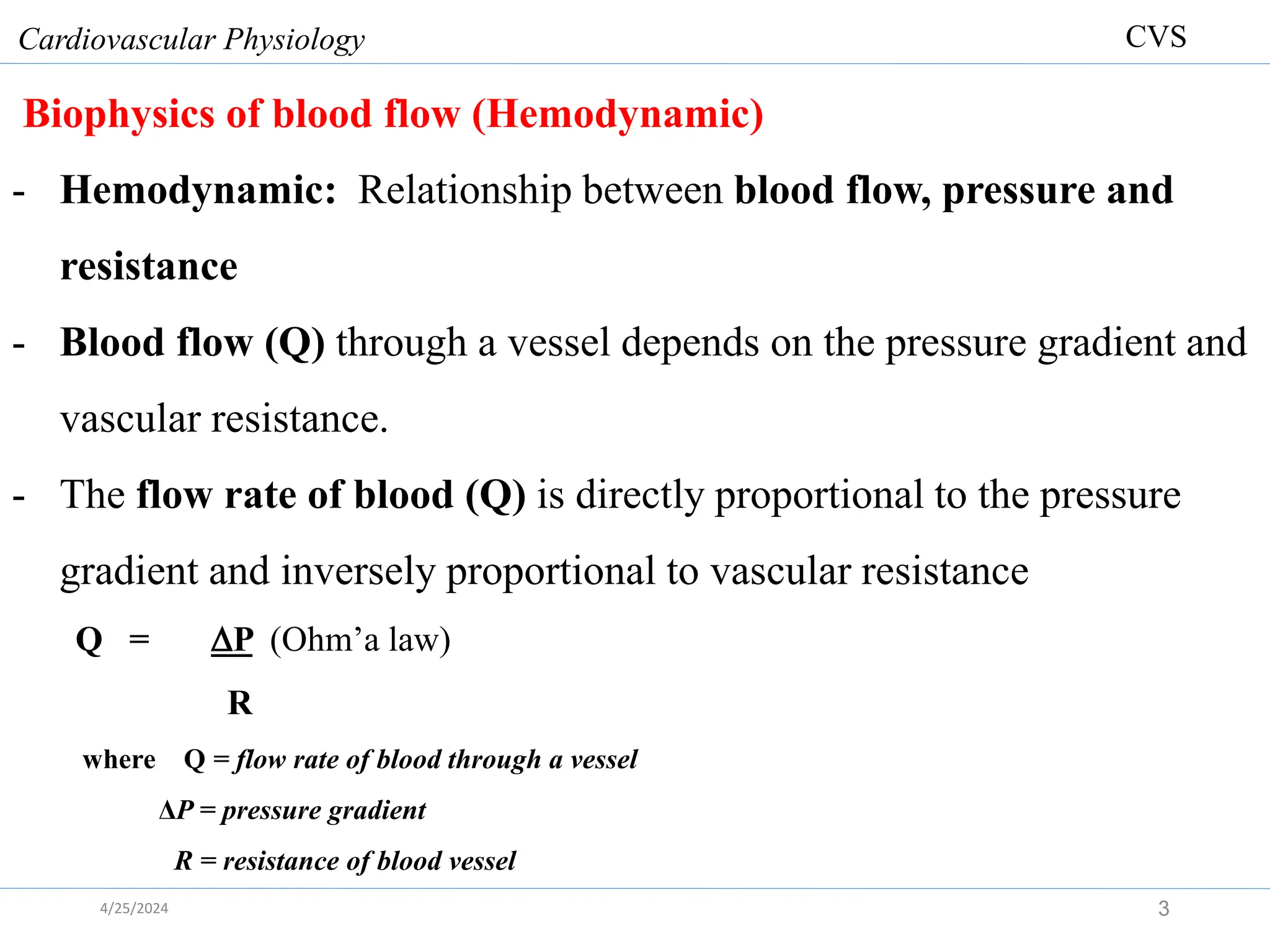The document provides an in-depth overview of cardiovascular physiology, focusing on blood flow dynamics, peripheral circulation, and the structure and function of blood vessels. Key concepts include hemodynamics, types of blood flow, and the regulatory mechanisms for vascular resistance and blood pressure. It also details the composition of the vascular system, including the microcirculation, types of blood vessels, and their roles in maintaining healthy circulatory function.




















































































































































